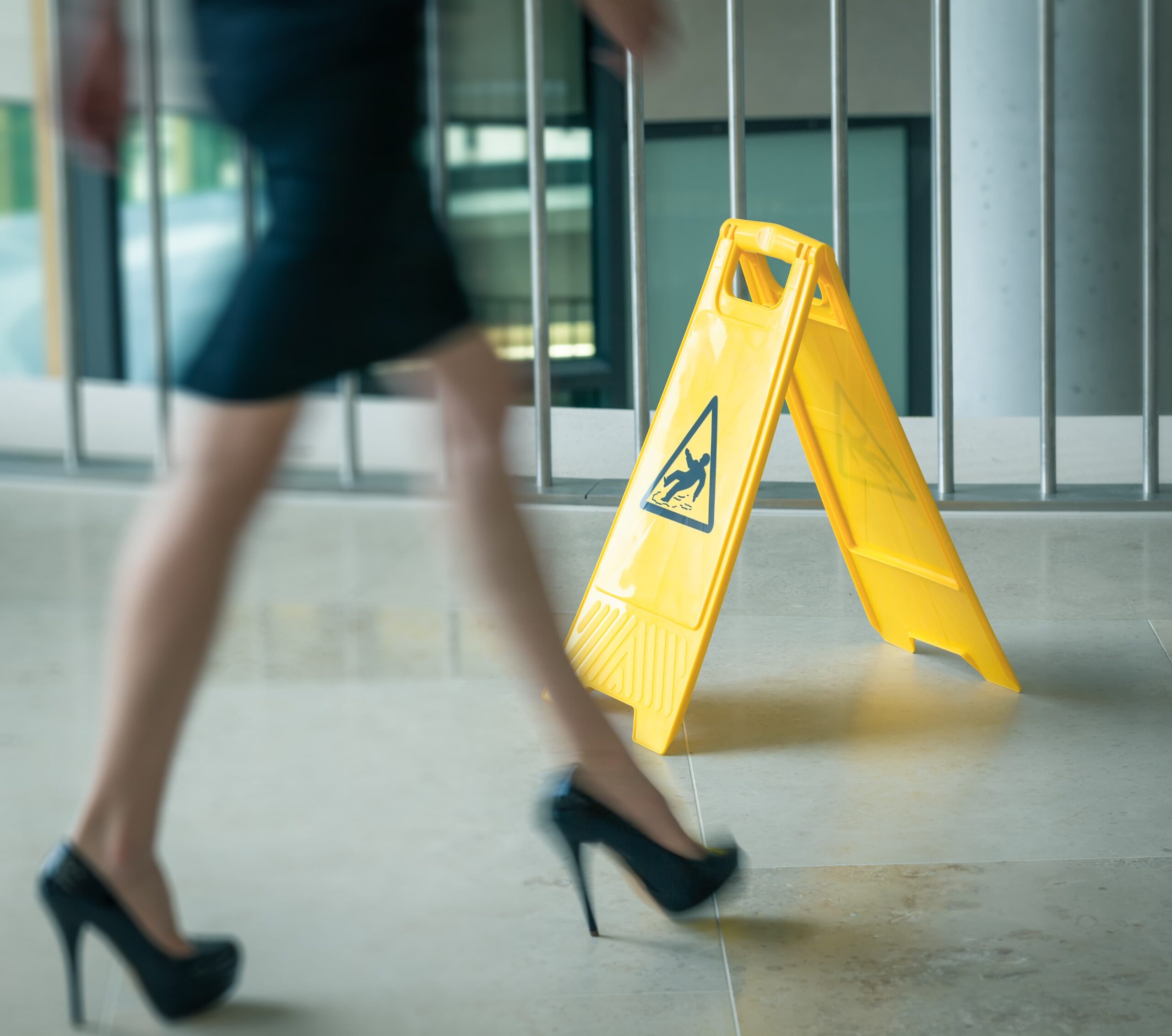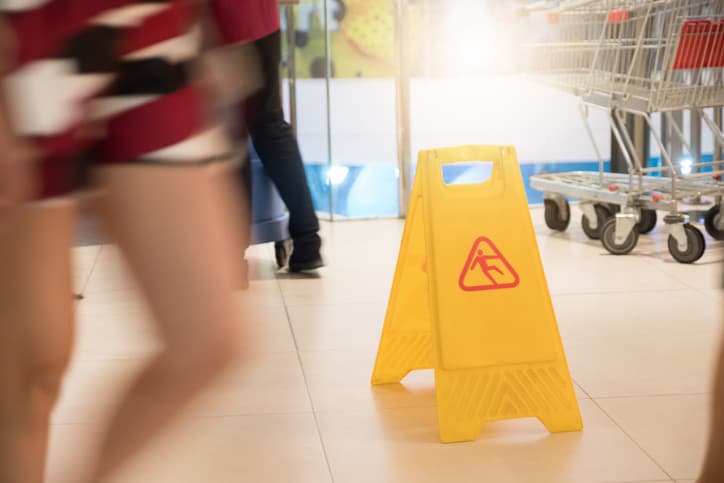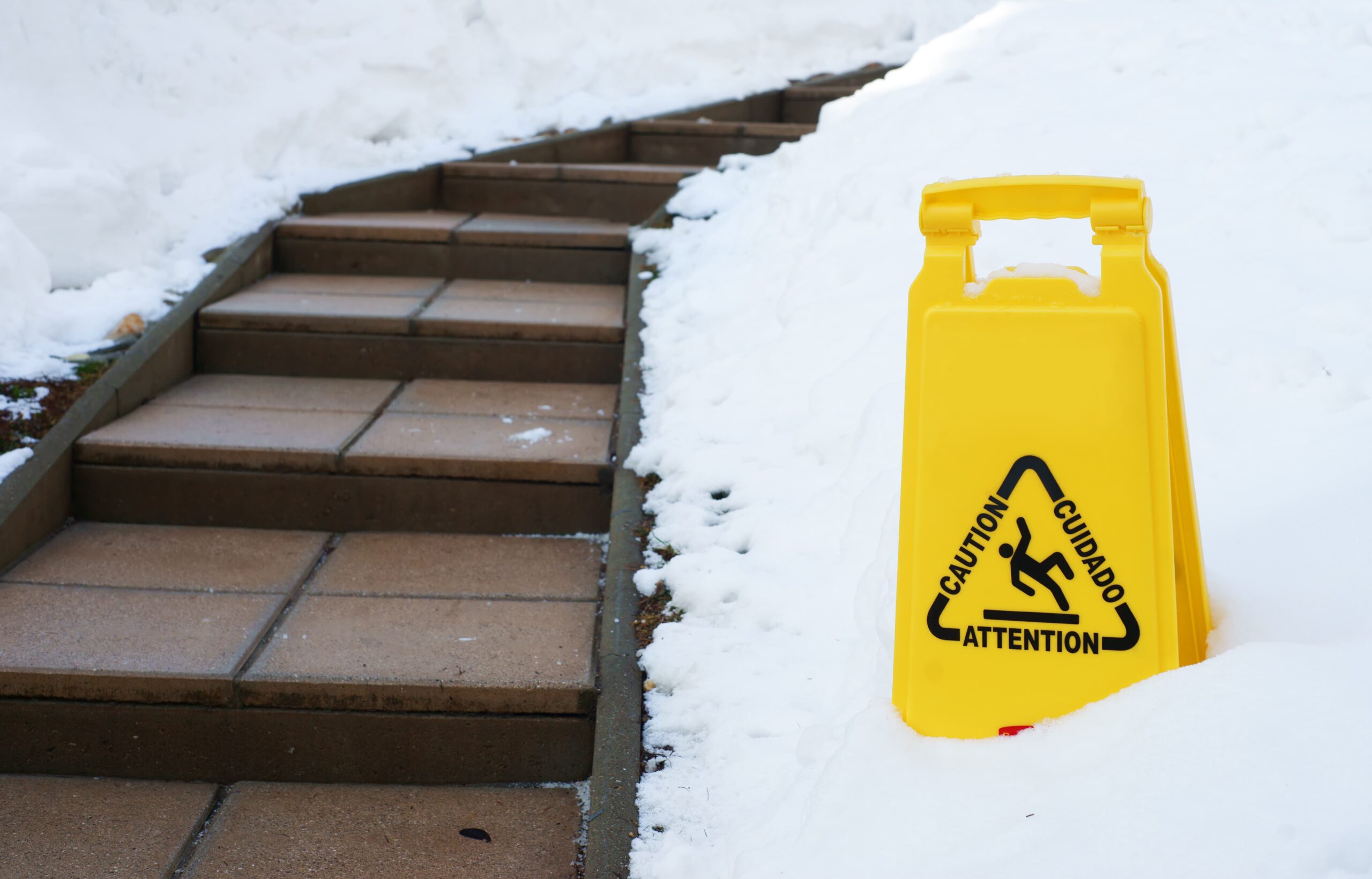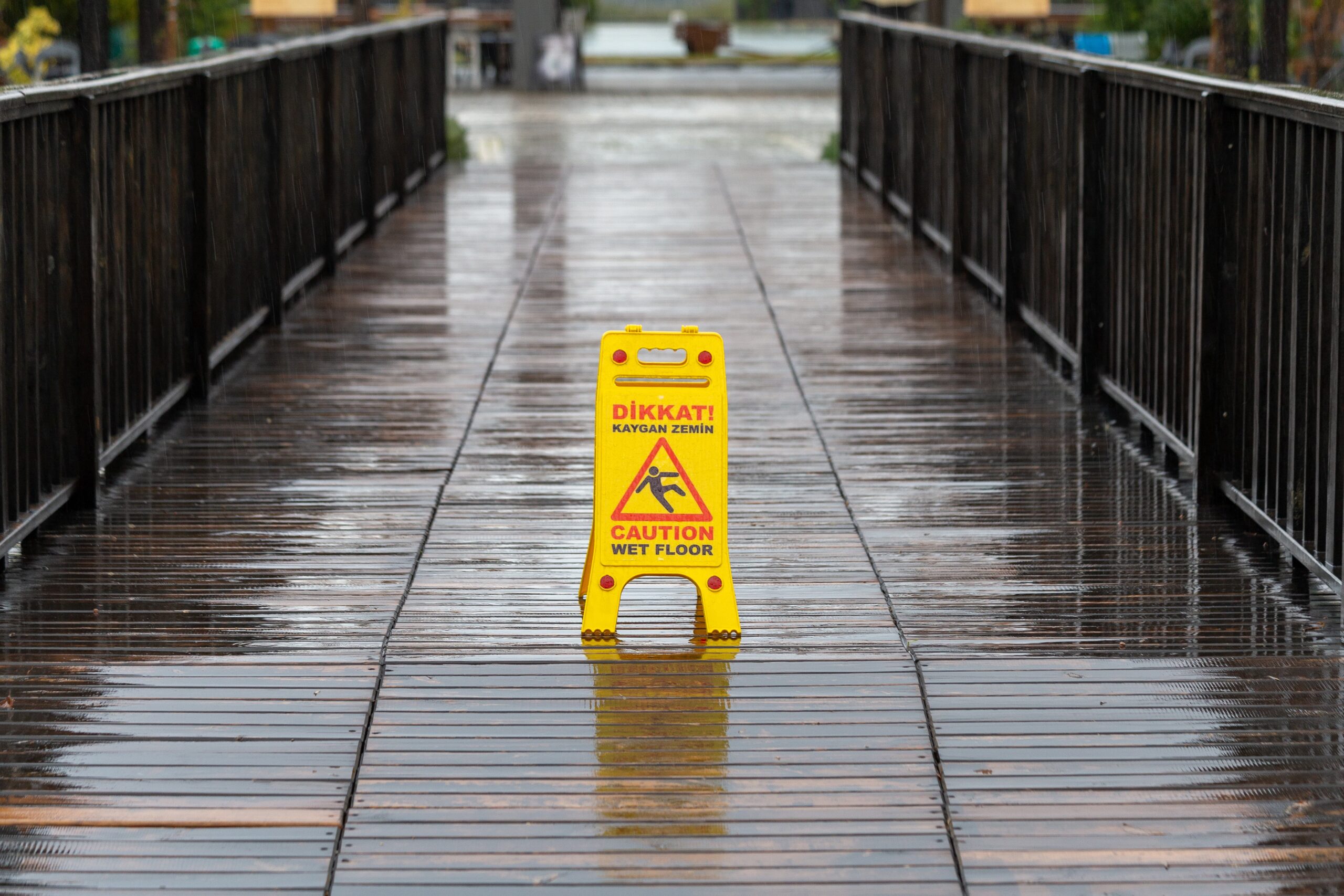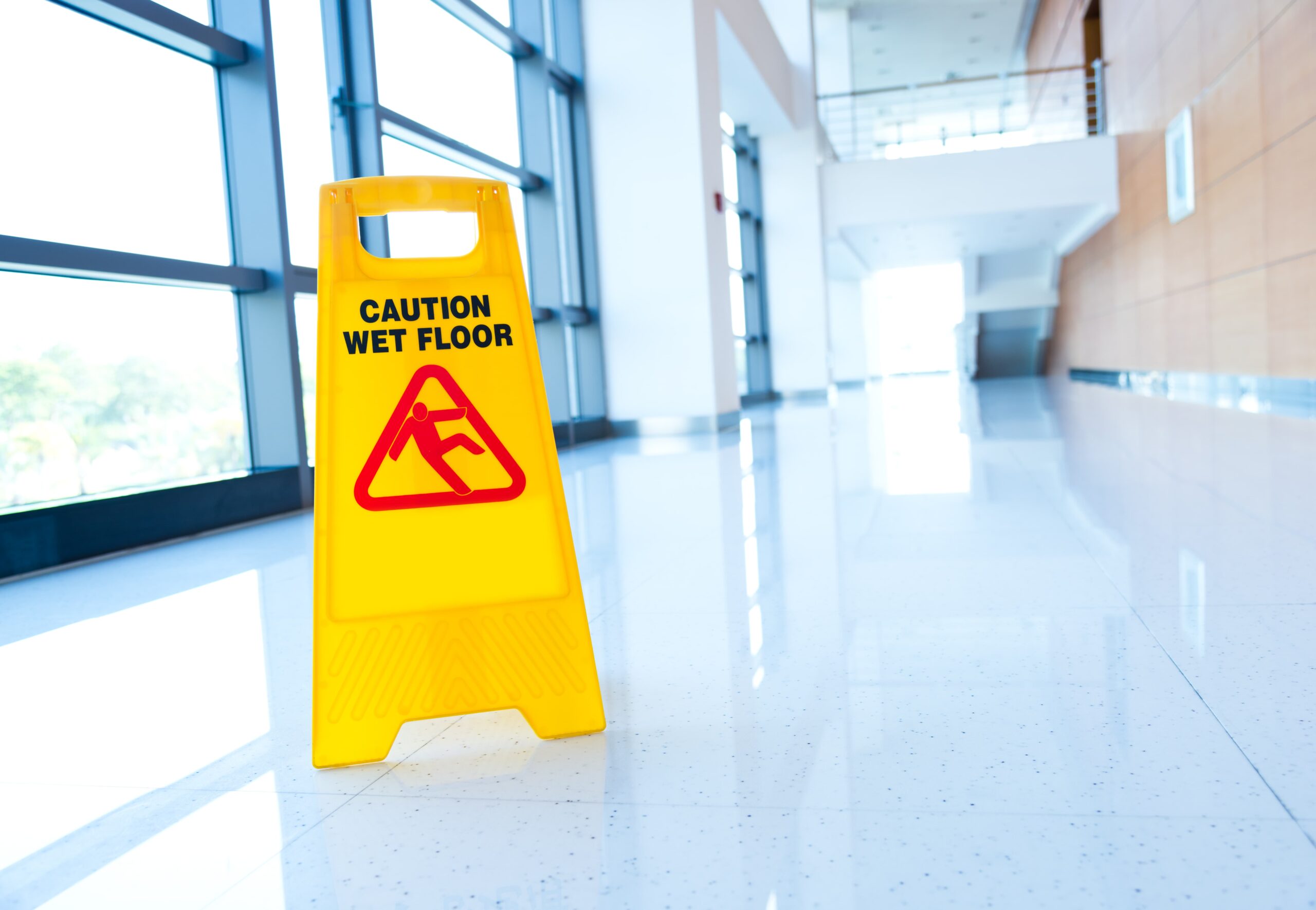How to Prevent a Slip and Fall in the Workplace
Any workplace has a danger of slip and fall accidents. Some slip and fall dangers are obvious, while others may not be so obvious. An employer should take steps to minimize the risk of falling for employees as well as for patrons and vendors. There are measures that any employer can take to reduce the risk of slip and fall harm. Our slip and fall attorneys in Denver, Colorado explain how to prevent slips, trips, and falls in the workplace.
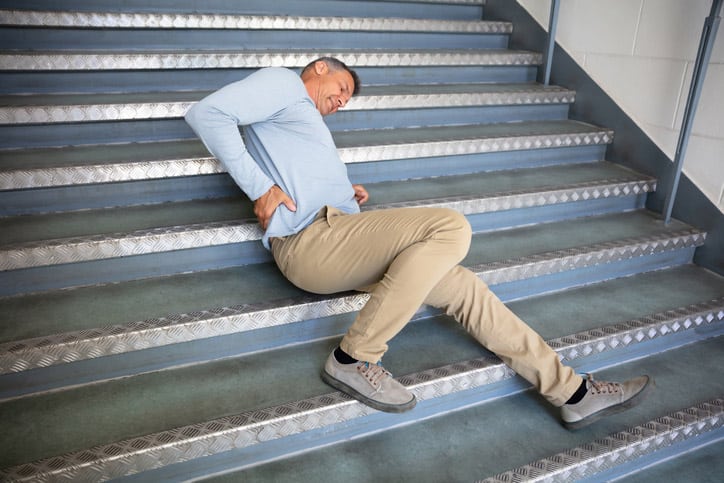
How to Prevent Slips, Trips, and Falls in the Workplace
To prevent slips, trips, and falls in the workplace, an employer should take active steps to identify hazards and implement measures to minimize them.[1] A slips, trips, and falls prevention program should include a system for periodic maintenance and safety checks that need to be done regularly to prevent accidents.
It should also include an education initiative for employees to be aware of slips, trips, and fall hazards and how to avoid accidents. How to prevent slips, trips, and falls in the workplace means identifying dangers and implementing a methodical system to minimize the chances of an accident.
Slips Trips and Falls Control Measures
Slips, trips, and falls control measures should include the following:
Use mats at the entrance of the doorway – The area of any business that receives the most foot traffic is usually the main door. That’s where patrons come in and out. Without care, it’s the spot where slip and fall accidents are especially likely to occur.
It’s important to place large mats at the entrance of the doorway. The mat can soak up dust, water, and snow that people might track in with them when they enter the building. Each mat should be the right size to cover the area surrounding the entrance. It’s also important not to assume that a mat fixes everything, especially in the snowy winter. You should take other measures to clear the entryway as appropriate.
Place anti-skid tape where necessary – Anti-skid tape can prevent slip and fall accidents in places like stairways and corners. It can also be helpful where employees have to lift, push, and perform other physical tasks. Flooring that isn’t carpeted may need anti-skid tape to make it safe for employees to work without falling. Anti-skid tape should be monitored periodically to make sure that it doesn’t peel or fray.
Cover loose wires with tape and other coverings – As more and more technology goes online, there are more wires in the workplace than ever before. Employers should be sure not to have employees or customers walk across cords. There are coverings and tape that are made just to help keep employees safe when there have to be wires and cables in the workplace. Ensuring that wires and cables aren’t trip hazards can help your employees stay safe.
Empower employees to identify and report dangers – Employees need to know that they play a pivotal role in preventing slips and falls. Each workplace should educate employees to identify and report hazards. The system for reporting dangers should be clear. In addition, the reporting system should operate without fear of retaliation. In fact, employees should be encouraged to report dangers and hazards.
Employees are the people on the front line of any workplace. They are often in the best position to know when dangers exist and remedy them. Any program to prevent slips, trips, and falls should harness the power of employees to identify dangers and protect their own workplace.
Create a regular system for safety checks – Workers may identify slip and fall dangers as they go about their work. However, one effective way to prevent slip and fall accidents is to create a system for regular checks for hazards. These checks should happen as often as necessary. For example, if the entryway to a store tends to become wet during the winter, an employee should be assigned to check on the entryway as often as they need to to keep the area clear.
Clean up spills immediately as they occur – It’s essential to address dangers quickly when you see them. When spills happen, cleaning then up should be a priority. It should be clear whose job it is to address a spill when it happens. Working quickly to address a spill not only helps prevent slip and fall accidents, but it also helps shield the employer from legal liability for failing to address a spill.
Place wet floor and danger signs – When spills occur, the best practice is to clean them up as soon as possible. However, in the interim, you need to do something to warn people about the potential danger. Wet floor and danger signs can help warn people to steer clear of a slip and fall hazard until you have time to react.
Clear clutter and other obstacles – Employees should be trained to clear debris and clutter from walkways and other areas. For example, in a store, employees shouldn’t leave crates or other packaging in the aisles where employees and customers can trip. Having equipment or even office furniture scattered in unusual places can lead to a slip and fall accident. Representatives of the business should evaluate the work area to identify obstacles that may cause trip hazards.
Salt and Shovel as Needed
Snow and ice are a cause of many slip and fall accidents, especially in Colorado. Creating a safe workplace means clearing ice and snow as it accumulates. Employees who must work on slick surfaces can wear gripping devices on their shoes to help prevent falls.
Boots can be another big help for employees who work outside. Using salt or sand and shoveling as you need to can help prevent slip and fall accidents in the workplace. Employees should wear the appropriate safety equipment, including boots with the right grips for working on ice and snow.
Slip, Trips, and Falls Attorney
Do you have questions about slips, trips, and falls? We’re Colorado’s attorneys for slips, trips, and falls, and we can help. Call us today to talk with our team about your case. Your call is free. See how we can represent you with no fee unless you win. Call us today.
Sources
[1] United States Department of Labor; Occupational Health and Safety Administration. Healthcare wide hazards; Slips, Trips and Falls. Retrieved 12 December 2019 from https://www.osha.gov/SLTC/etools/hospital/hazards/slips/slips.html.

